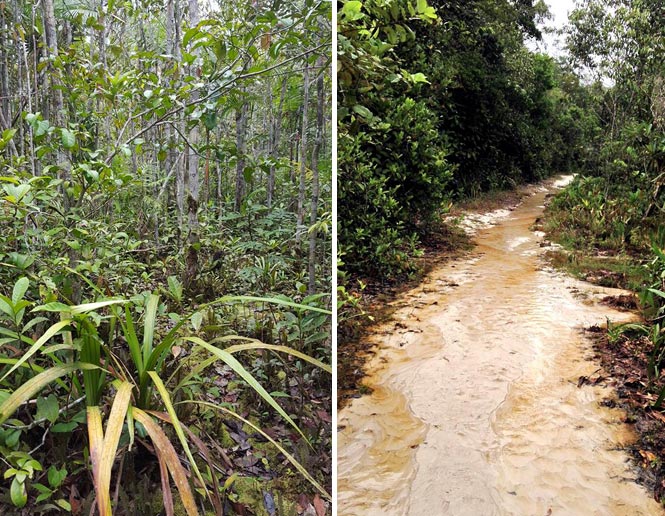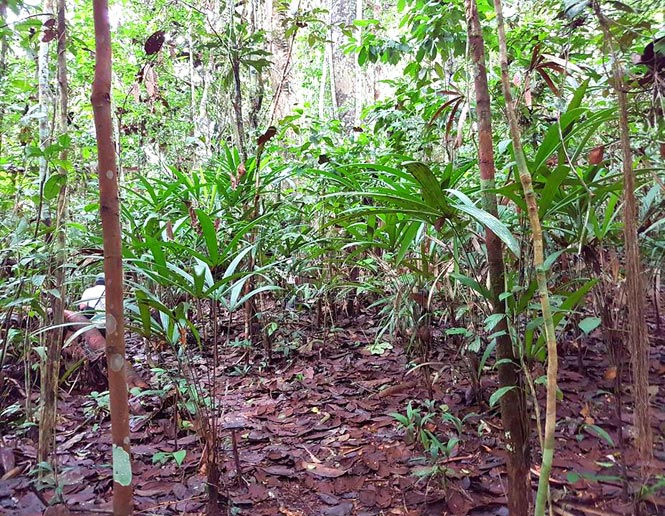
White sand forest in Brazil. Photo: Courtesy of Mongabay.com
White Sand Forest
The white sand forest is patchily distributed in Tropical South America. The appearance of white sand forest varies from stands of scrub and shrubs with bare patches of sand to forest structurally similar to the forest that surrounds patches of white sand forest.

Typical appearance of a white sand forest.
White sand forests grow on sandy soils, which contain a very low amount or no clay, little organic matter, and very little nutrients. These soil conditions result in soils unable to retain water subject to periods of drought more severe than the surrounding forest. The vegetation growing in the white sand forest is generally stunted with a unique plant and animal assemblages endemic and adapted to life in such conditions.

White sand forest with some content of organic matter. Allpahuayo-Mishana en Iquitos.
See more Neotropical bird habitats.
References:
Fine, P.V.A. & Bruna, E.M. (2016). Neotropical White-sand Forests: Origins, Ecology, and Conservation of a Unique Rain Forest Environment. Biotropica, 48 (1), 5-6. doi: 10.1111/btp.12305